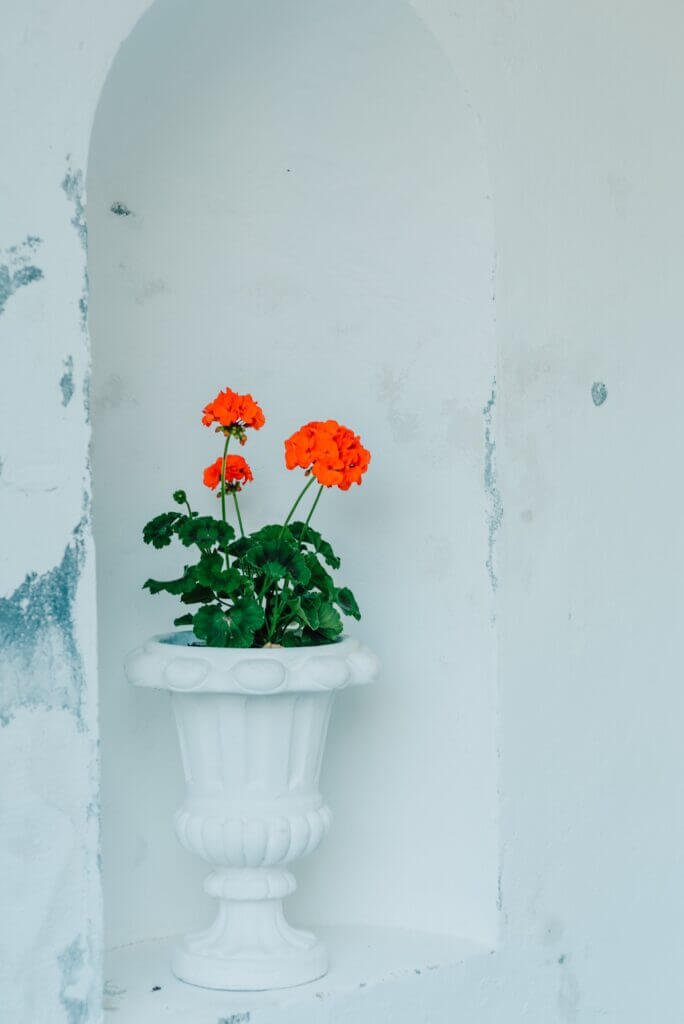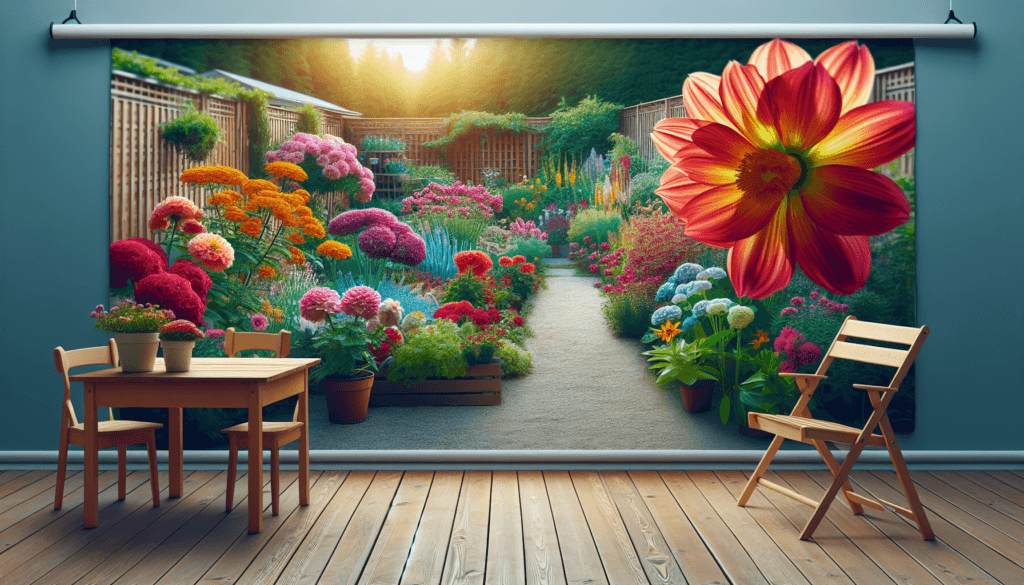Looking to add some color and beauty to your outdoor space? Look no further! In this article, we will be sharing the top 5 flower garden DIY projects that are perfect for beginners. Whether you have a green thumb or are just starting out with gardening, these projects are easy, fun, and will transform your garden into a blooming paradise. From creating your own hanging flower baskets to designing a picturesque flower bed, we’ve got you covered. So grab your gardening gloves and get ready to unleash your creativity – your garden will thank you!

Creating a Raised Flower Bed
Choosing the Right Location
When creating a raised flower bed, it’s essential to choose the right location for optimal growth and beauty. Look for an area in your yard that receives ample sunlight, ideally around six to eight hours a day. This will ensure that your flowers thrive and bloom to their fullest potential. Additionally, consider the proximity to water sources, as a raised bed may require more watering than traditional garden beds.
Preparing the Site
Before constructing the raised bed, it’s crucial to prepare the site properly. Remove any grass, weeds, or debris from the area where you plan to place your flower bed. This will help prevent unwanted plant growth and ensure a clean and healthy environment for your flowers. Consider digging and loosening the soil to improve drainage and promote root growth.
Constructing the Raised Bed
To construct the raised bed, you will need to gather the necessary materials such as wood, bricks, or stones. Choose a material that suits your aesthetic preferences and budget. Measure and mark the dimensions of your desired raised bed, ensuring it’s wide enough to accommodate your chosen flowers. Assemble the materials, making sure they are securely fastened together. Place the constructed bed in your chosen location and level it to ensure stability and even planting.
Selecting and Planting Flowers
Now that your raised flower bed is ready, it’s time to select the perfect flowers to bring life and color to your garden. Consider factors such as the flower’s sun requirements, height, and preferred soil conditions. Choose a variety of flowers that will bloom at different times, providing a continuous display of beauty. When planting, follow the instructions on the seed packets or plant tags regarding depth and spacing.
Applying Mulch and Watering
After planting your flowers, apply a layer of mulch around the base of each plant. Mulch helps retain moisture, suppresses weed growth, and adds a polished look to your raised flower bed. Additionally, watering is vital to the health of your plants. Regularly check the soil moisture and water as needed, ensuring the roots receive adequate hydration. Avoid overwatering, as it can lead to root rot or other plant diseases.

Building a Vertical Flower Garden
Determining the Ideal Structure
A vertical flower garden is an excellent option for those with limited space or those looking to add a unique design element to their outdoor area. Before building the structure, consider the available space and the weight-bearing capacity of your chosen location. Determine whether a freestanding structure or a wall-mounted option would work best for your needs and preferences.
Selecting Suitable Plants
One of the key aspects of a vertical flower garden is choosing plants that are suitable for vertical growth. Look for plants with trailing or climbing habits, such as ivy, clematis, or morning glory. Take into consideration the specific requirements of each plant, including sunlight, water, and soil needs. It’s essential to select plants that will thrive in the space provided and complement each other aesthetically.
Preparing the Structure
Once you have determined the ideal structure and selected suitable plants, it’s time to prepare the vertical garden. Ensure that the structure is secure and stable, especially for wall-mounted options. Consider using a trellis, lattice, or wire mesh to support the plants’ growth and provide a visually appealing framework. Depending on the structure, you may need to attach the plants using hooks, clips, or ties.
Planting and Maintaining Flowers
When planting in a vertical garden, start by preparing the soil by adding organic matter or fertilizer to provide nutrients for the plants. Carefully plant each seedling or young plant, ensuring the roots are covered and secure. Water the plants thoroughly after planting and monitor their progress regularly. Vertical gardens may require more frequent watering due to the increased exposure to wind and sunlight.
Tips for Maximizing Vertical Space
To maximize vertical space in your flower garden, consider incorporating hanging baskets or shelves for additional plant display opportunities. Group plants with similar growth habits or color schemes to create a more cohesive and visually appealing design. Regularly prune and trim plants to control their growth and prevent overcrowding. Additionally, periodically check the stability of the vertical structure to ensure it remains secure and safe.

Designing a Container Flower Garden
Choosing the Right Containers
When designing a container flower garden, choosing the right containers is crucial for both aesthetic appeal and plant health. Consider the size, shape, and material of the containers, ensuring they provide adequate drainage and are suitable for the plants you wish to grow. Hang baskets, pots, and troughs are popular container options, allowing for creative arrangements and versatility in positioning.
Selecting the Appropriate Plants
Selecting the appropriate plants for your container flower garden is essential for success. Consider the size of the container and the plants’ growth habits to ensure they have enough room to thrive. Choose a variety of flowers that complement each other in terms of height, color, and blooming season. Ensure that the selected plants can tolerate the sunlight conditions and soil type of your chosen location.
Creating a Balanced Arrangement
When designing a container flower garden, create a balanced arrangement by considering the height, color, and texture of the plants. Place taller plants at the back or center of the container and shorter plants towards the front or edges. Mix flowers with different bloom times to ensure a continuous display of color throughout the growing season. Add foliage plants or trailing vines to provide depth and cascading effects.
Providing Adequate Drainage
Drainage is essential for the health of plants in a container garden. Ensure that each container has drainage holes at the bottom to allow excess water to escape. Consider placing a layer of gravel or broken pottery shards at the bottom of the container to further enhance drainage. Additionally, periodically check the soil moisture and water accordingly, avoiding overwatering or waterlogged conditions.
Caring for Container Gardens
Container gardens require regular maintenance to ensure the plants remain healthy and vibrant. Water the plants as needed, avoiding both underwatering and overwatering. Fertilize the plants regularly with a balanced liquid fertilizer to provide essential nutrients. Remove spent flowers or damaged leaves to promote new growth and prevent diseases. Monitor for pests and take appropriate measures to control and prevent infestations.

Constructing a Flower Border
Planning and Measuring the Border
Constructing a flower border involves careful planning and measuring to achieve a well-balanced and visually appealing design. Determine the length and width of the border, ensuring it complements the surrounding landscape. Consider the height and growth habits of the chosen flowers when planning the border, placing taller plants towards the back and shorter ones towards the front.
Preparing the Soil
Before planting in the flower border, it’s essential to prepare the soil to provide a healthy growing environment for your plants. Remove any weeds, rocks, or debris from the area and loosen the soil using a garden fork or tiller. Incorporate organic matter, such as compost or well-rotted manure, to improve soil fertility and drainage. Consider conducting a soil test to determine the pH level and make necessary adjustments.
Selecting a Variety of Flowers
Choosing a variety of flowers is key to creating a visually stunning flower border. Select plants with different heights, colors, and textures to add interest and diversity. Consider incorporating a mix of perennials and annuals for continuous bloom throughout the seasons. Research the specific sunlight, water, and soil requirements for each flower to ensure they will thrive in your garden.
Arranging the Flowers in the Border
When arranging the flowers in the border, create a natural and harmonious composition. Place taller plants towards the back or center of the border, gradually transitioning to shorter plants towards the front. Consider grouping similar plants together to create focal points or color schemes. Leave enough space between plants to promote air circulation and prevent overcrowding.
Maintaining and Enhancing the Border
Once the flower border is established, regular maintenance is crucial for its ongoing health and attractiveness. Water the plants deeply and consistently, especially during hot and dry periods. Apply a layer of organic mulch around the plants to retain moisture, suppress weeds, and improve soil health. Periodically deadhead spent flowers and remove any damaged or diseased foliage. Consider adding seasonal plantings or additional flowers to enhance the border’s beauty throughout the year.
As you embark on your flower garden DIY projects, enjoy the process and let your creativity flourish. With careful planning, proper preparation, and regular maintenance, you’ll soon have a beautiful and thriving garden to enjoy. Whether you choose to create a raised flower bed, a vertical flower garden, a container flower garden, a flower border, a wildflower meadow, a flower pyramid, a butterfly and bee garden, a flower walkway, a herb and flower container, or a flowering archway, each project offers its unique beauty and rewards. Happy gardening!



